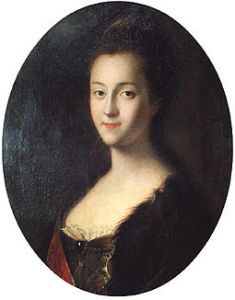
By Gabby Storey
Catherine (2 May 1729-17 November 1796), Empress of Russia, was born Sophie Friederike August von Anhalt-Zerbst-Dornburg in Prussia, the daughter of Christian August, prince of Prussia, and Princess Johanna-Elisabeth of Holstein-Gottorp.
In 1744, Sophie travelled to the Russian court as a marital alliance was arranged between herself and the future tsar, Peter III. They married at St Petersburg on 21 August 1745. Prior to the marriage, Sophie converted to Eastern Orthodoxy.

In January 1762, Peter and Catherine became rulers of Russia. Their marriage was not harmonious, with both parties operating in different social circles, and culminated in Peter’s abdication six months after his accession.
His abdication was the result of a scheme orchestrated by Catherine, with the co-operation of the Ismailovsky Regiment and the clergy. Catherine continually emphasised her legitimacy and fitness to rule during her thirty-four year reign.
Catherine’s actions as a reformer saw the encouragement of learning and growth in cultural projects, however her reign saw the lower classes suffer through warfare, and the pursuit of her intellectual ideals.
Catherine is known to have taken several lovers during her reign. She had four children: the eldest, Paul, was officially acknowledged as Peter’s son, although Catherine’s memoirs may indicate otherwise.
Her three other children Anna, Alexei, and Elizabeth were all sired by different fathers. Catherine died of a stroke on 17 November 1796 at the Winter Palace, St Petersburg. She was buried at Saints Peter and Paul Cathedral, Saint Petersburg.
Recommended Reading
Orel Bellinson, “Female Rule in Imperial Russia: Is Gender A Useful Category of Analysis?” in A Companion to Global Queenship, ed., Elena Woodacre, 79-93 (Leeds: Arc Humanities Press, 2018)
Viktoria Ivleva, “Catherine II as Female Ruler: The Power of Enlightened Womanhood,” Vivliofika: E-Journal of Eighteenth-Century Russian Studies 3 (2015): 20-46
Virginia Rounding, Catherine the Great: Love, Sex, and Power (London: Cornerstone Publishing, 2007).
